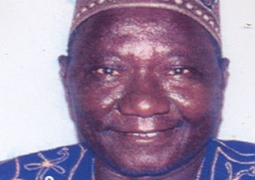In a bid to further sensitise the Gambia media fraternity on the control, prevention, trends, case definition and the role of TB control and prevention, the national TB and Leprosy Control Unit under the auspices of the Ministry of Health and Social Welfare recently organised a two day sensitisation for journalists drawn from different media outlets in the country.
In this report by Health Matters MK Marenah, who was among the participants, we will bring you presentations by various health experts. First to start with is Mr. Musa B Jallow, Deputy Program Manager NLTP who made a presentation on the trends in Tuberculosis Control in the
Mr Jallow in his presentation told journalist that the goal of the TB control unit is to reduce tradition, morbidity and mortality of TB so that it is no longer a public health problem in the
He said their targets are to increase TB case detection rates to at least 70% by 2012 relative to 2006 level of 64%, achieve treatment related success rates at least by 2012 relative to 2006 level 82%, reduce death rate from 7% in 2006 to 5% by 2012, reduce defaulter rate in smear positive in TB cases from 4% to 2% by 2012, maintain MDR-TB prevalence at 1%, increase the number of TB patients counselled and tested for HIV from 50% in 2007 to at least 90% by 2012 and scale up DOTS centres from 22 in 2007 to 40% by 2012.
Dilating on the intervention strategies, Mr Jallow went on to explain that pursued highly qualify DOTS expansion through the following
- increase political commitment to sustain TB control activities
- TB cases detection through quality assumed bacteriology
- Standardised treatment with supervision and patients support
- An effective drugs supply and management system
He said that TB & HIV could be address through the following intervention approaches
- strengthen the TB%HIV collaboration
- strengthen TB&HIV control within congregational setting such as prisons, police, military and boarding schools
- Engage all care providers through public-private mix (PPM) approaches.
- Strengthen advocacy communication and social mobilisation activities as well as community level
- Monitoring and evaluation and impact assessment
Basic Facts about TB
Mr Jallow continued his presentation with basic fact about TB. He noted that when a person has TB, every three or two people living with him or her can become infected adding that few weeks after infection, they develop a positive TB skin test. At this point most people contain the infection however, among infected person (without HIV), only one in ten will develop TB about 90% will remain healthy.
He said in the absence of R+ 50% of TB PTS will die within 5 year, and 25% will remain sick with chronic infectious TB.
According to the senior health officer, about 25% will spontaneously recover and be healthy but can be sick saying the importance trigs is weaken immune due to HIV and approximately, one third of HIV infected person world-wide are also infected with mtb.
Speaking on the sign and symptoms, he move forward that
*Persistent productive coughs (two weeks)
*Unintentional loss of weight
Loss of appetite
- night sweats
- fever
Transmission of the infection
He said transmission occur by air borne spread of infection droplets saying the main type of infection is person with sputum smear PTB who is coughing or sneezing and transmission generally occurs indoors.
Mr Jallow reminded journalist that ventilation removes droplets uncle while direct sun light quickly kills tuberculosis bacilli, stressing that transmission is also greatly enhanced by overcrowding particularly in dark, and poorly ventilated places.
He further revealed that factors that accelerate progression from infection to disease are; HIV infection, malnutrition, alcohol abuse, Diabetes, emotional stress, prolong treatment with corticoserold or immune suppression medication.
Next to present was Mr Alieu Wurrie, a senior health officer at the unit who presented on the Case definition in TB
Speaking on what determine case definition? Mr Wurrie noted that site of the TB, result of sputum smear, severity of TB disease, history of previous of TB disease.
On the issue of objectives he went informed the gathering that
*To know the type of TB
*To allow appropriate treatment to be given
*The outcome of treatment to be evaluated
He said why match standardised treatment regimen to diagnostic category?
*To avoid under treatment of previously treated cases and therefore to prevent acquired resistance
- To minimise side effects for patients by avoiding unnecessary over treatment.
On the issue of case definitions
*TB suspect; any person who presents with symptoms or signs suggestive of TB, in particular cough of long duration (two weeks or more)
* Case of TB; a patient in whom TB has been confirmed in the laboratory or diagnosed
By clinician
* Definite case of a TB; a patient with two sputum smear positive for acid-fast bacilli.



